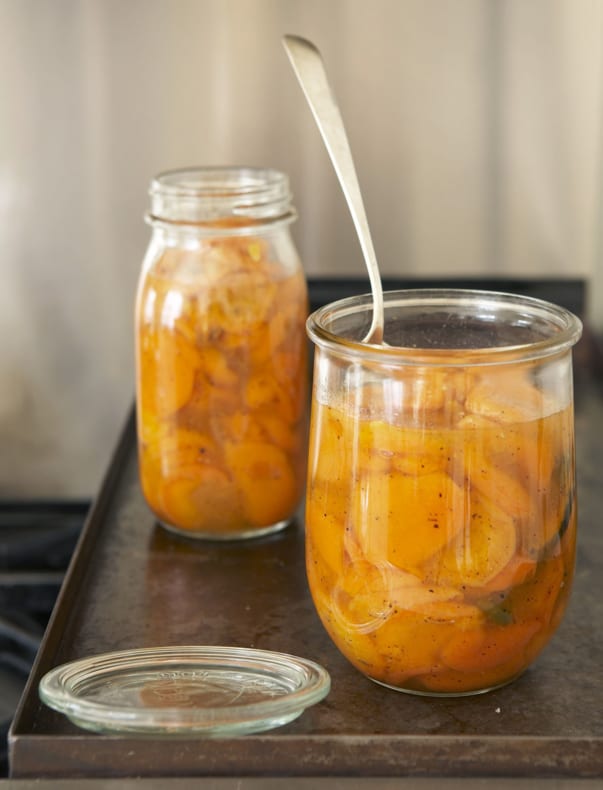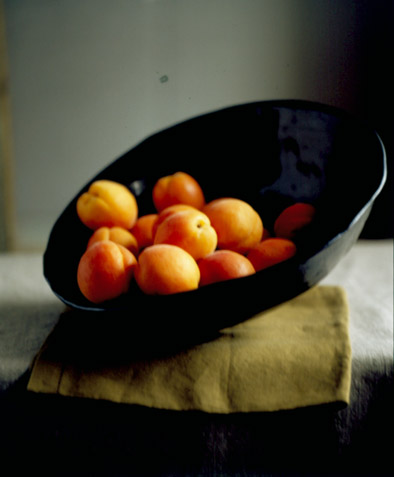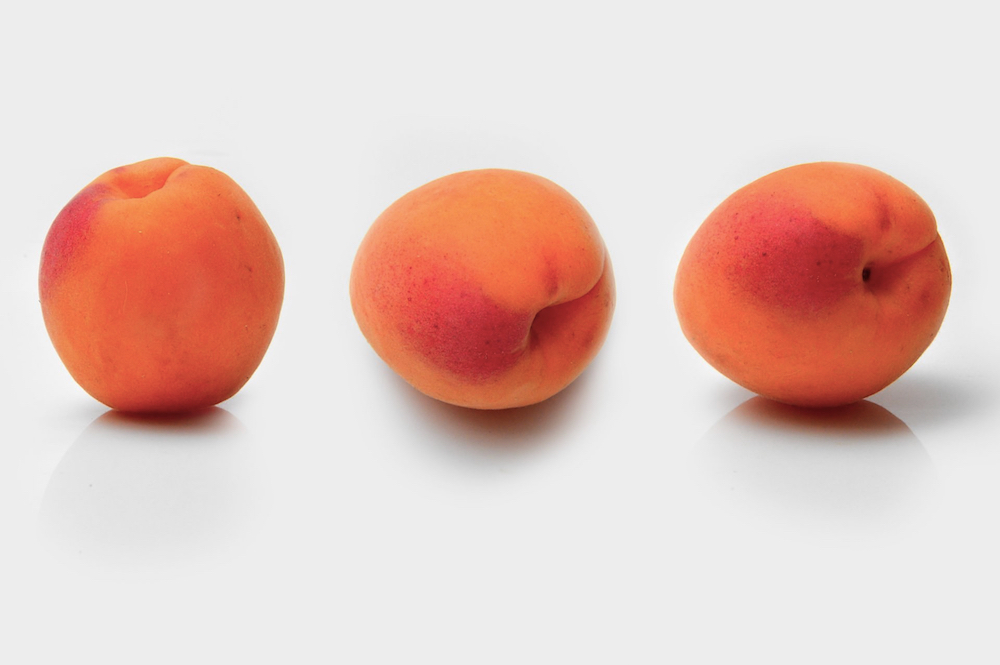Every summer in apricot season, my mission is to find a great apricot. It is such a delicate fruit that it too often suffers from the vagaries of weather or harsh travel; Muted flavor and mealy texture is all too common. But a great apricot, fragrant, sweet, ethereally textured, is a sublime experience. Diane Ackerman’s poem “The Consolation of Apricots” gives a sense of just how far an apricot can launch you into reverie. It also gives instructions for how to eat one.
Especially in early spring,
when the sun offers a thin treacle of warmth,
I love to sit outdoors
and eat sense-ravishing apricots.
Born on sun-drenched trees in Morocco,
the apricots have flown the Atlantic
like small comets, and I can taste
broiling North Africa in their flesh.
Somewhere between a peach and a prayer,
they taste of well water
and butterscotch and dried apples
and desert simooms and lust.
Sweet with a twang of spice,
a ripe apricot is small enough to devour
as two hemispheres.
Ambiguity is its hallmark.
How to eat an apricot:
first warm its continuous curve
in cupped hands, holding it
as you might a brandy snifter,
then caress the velvety sheen
with one thumb, and run your fingertips
over its nap, which is shorter
than peach fuzz, closer to chamois.
Tawny gold with a blush on its cheeks,
an apricot is the color of shame and dawn.
One should not expect to drink wine
at mid-winter, Boethius warned.
What could be more thrilling
than ripe apricots out of season,
a gush of taboo sweetness
to offset the savage wistfulness of early spring?
Always eat apricots at twilight,
preferably while sitting in a sunset park,
with valley lights starting to flicker on
and the lake spangled like a shield.
Then, while a trail of bright ink tattoos the sky,
notice how the sun washes the earth
like a woman pouring her gaze
along her lover’s naked body,
each cell receiving the tattoo of her glance.
Wait for that moment
of arousal and revelation,
then sink your teeth into the flesh of an apricot.

Me, I’d eat a good apricot anytime I have a minute to settle and take in all that beauty.
Here are some instructions for getting hold of one:
How do you tell if an apricot is good?
Apricots should be orangey gold, with a blush of pink, the flesh giving slightly when pressed. Above all, an apricot should be fragrant. Even if not yet ripe, an apricot will exude a little scent at the stem end, indicating that it will intensify as it ripens. If you can’t smell anything, don’t buy it. In my experience, smaller apricots are usually finer. If you are buying at a farmer’s market, ask if you can taste one.
What to do if the apricot you’ve bought is less than stellar?
The flavor of most stone fruit can be rescued by cutting it up and tossing it with lemon juice and sugar. Let sit until the juices run before eating. If the texture isn’t pleasing, plan to bake the macerated fruit in a tart or crumble, which will transform the texture.

Since good apricots are a rare occurrence, I figured out a way to create that effect using dried California apricots. I cook them gently in a syrup perfumed with vanilla bean, and lemon and orange zest until they have plumped up. Then I let them cool and store them in a jar. Like magic they possess the bright flavor of summer.

Recipe: Apricots in Fragrant Syrup
I prefer to use California rather than Turkish apricots for their intense flavor and smooth texture. You can mail order them here. Serve the apricots as is with cream or yogurt or use as a filling for tarts and turnovers. They are a revelation roasted (see below).
Makes about 1 quart
3 cups water or 2 cups white wine mixed with 1 cup water About 3/4 cup wildflower honey, or to taste 1 vanilla bean, split and seeds scraped out 2 strips each orange and lemon zest, or 4 strips Meyer lemon zest 3/4 pound dried California apricots 1-2 tablespoons fresh lemon juice, or to taste
In a small nonreactive saucepan, combine the water (and wine, if using), honey, vanilla bean and orange and lemon zests.
Bring to a boil over moderately high heat, and cook about 7 minutes until the sweetener has dissolved and the syrup has a rich vanilla flavor.
Add the apricots and simmer – do not boil – for exactly five minutes. Stir in lemon juice to taste and additional honey if desired. Set aside to cool.
Transfer the apricots and syrup to a clean dry jar. They can be used right away, but get better if left several days to “cure” at room temperature. Store in the refrigerator indefinitely.

Recipe: Roasted Dried Apricots
Serve with whipped cream or vanilla icea cream.
Slightly caramelized, these have the vivid flavor of roasted fresh apricots. Drain the apricots and arrange them in a single layer in a buttered dish, dot with butter, sprinkle with sugar and roast in a 350’ oven (oven temperature is not critical: you can roast them along with other dishes at higher temperatures) until the bottom of the apricots are caramelized and the bottom of the pan looks like it is beginning to burn, about 30 minutes. Cool the pan slightly and place right on the table, for your guests to serve themselves (they will delight in peeling them out of the pan with their fingers).

Related Posts




